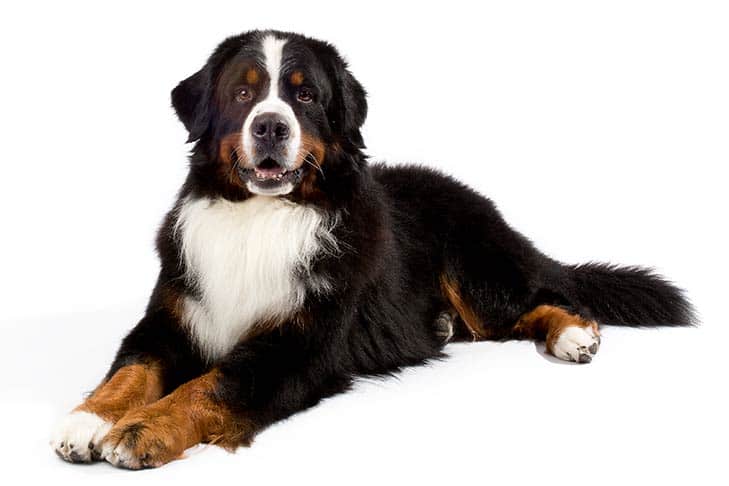A Bernese Mountain Dog can shed quite a lot. Anyone thinking about this breed needs to understand that while regular grooming will keep more of the shed coat in the trash and not floating in clouds throughout the home, your dog’s thick double coat is still going to shed year-round. Nothing will prevent that.
With that said, regular coat brushing and combing will help manage your dog’s beautiful thick, silky fur.
Daily brushing is the single best grooming regimen a Bernese owner can perform to keep his coat in excellent condition. If the coat becomes too tangled to comb, especially the fine feathering around the dog’s ears or underneath his tail, then mats might need to be clipped or scissored out of the coat.
How to Do the Brushing
Brushing the coat should begin with an inspection of the feathers along the dog’s ears, beneath his tail, and on his thighs.
Gently comb the feathers with a wide-toothed steel comb. Work out any mats with slight pressure. If the mats are thick, consider cutting the hair away using blunt or round-tipped scissors. Always point scissors away from the dog’s body in case he jerks.
Use a coat rake to loosen and pull the dead undercoat away from the dog. Always rake in the same direction as the coat growth so that the dog’s hair is not pulled out by the follicles. Get the rake deep into the double undercoat and pull firmly and with a long, steady stroke. Unless your Bernese is destined for the conformation ring, consider using one of the de-shedding tools on the market. A de-shedder loosens thick fur, but it can also cut healthy fur during a shed.
If you are preparing your Berner for the show ring, a de-shedder can harm his coat. But for the Berner who participates in other canine sports or who is a homebody, a de-shedder can help speed up the heaviest shed period. As with a rake, always use firm strokes in the direction of the coat growth. Stroke up and away from your dog’s body. Because some of these types of grooming tools have a sharp blade, be very careful not to accidentally nick your dog’s skin.
Follow the rake and de-shedder with a good all-purpose natural bristle brush. Stroke firmly in the direction of hair growth, and don’t forget the chest, neck, and head. A bristle brush should be firm enough that the bristles attract and collect loose fur but not so firm that brushing tickles or irritates your Bernese’s tender skin. Your Bernese Mountain Dog might enjoy lying down for a final brush of his belly.
After the raking, de-shedding, and brushing, use either a hand glove or soft towel to finish, which will give your dog’s coat a healthy, shiny glow. A hand mitt might have a smooth side and a dimpled side. Slightly moisten the cloth or mitt, and rub your Bernese’s coat from nose to tail. A good rubdown with a soft, barely damp cloth will also help reduce pollen or other allergens that your dog might bring in from his outside strolls.
By putting your hands on your dog after his grooming ritual, you can notice any tangles or mats unintentionally missed. More important, though, this is the time during grooming that you can notice any unusual sores, lumps, bumps, or hot spots. Because his coat is so thick, also take the opportunity to look for ticks or evidence of flea infestation.

